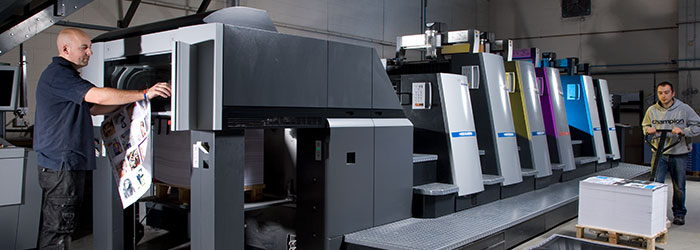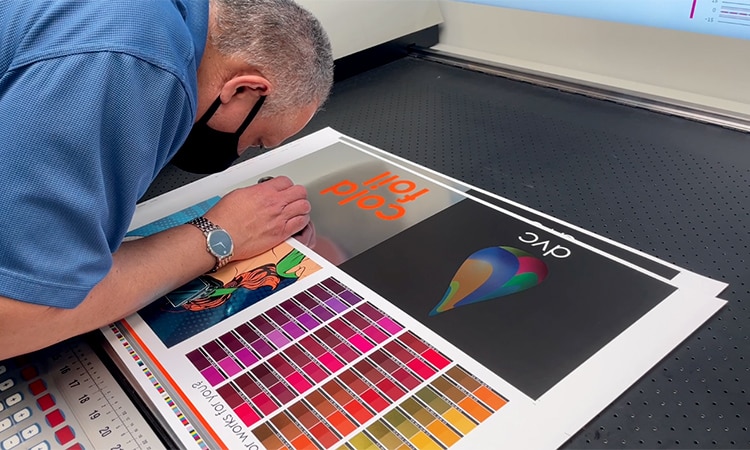litho printing for Large-Scale Commercial Projects
litho printing for Large-Scale Commercial Projects
Blog Article
A Comprehensive Overview to Recognizing Litho Printing Strategies
The world of litho printing, a method originating from the late 18th century, is a remarkable mix of history, art, development and science. Keep with us as we journey into the exciting realm of litho printing.
The Historical Development of Litho Printing
The historic trajectory of litho printing, a critical advancement in the world of communication, is a captivating story of human resourcefulness. Birthed in the late 18th century by Alois Senefelder, this technique was at first an affordable technique of publishing theatrical works. Lithography, obtained from the Greek words for 'stone' and 'to write', used a smooth stone surface to move images onto paper. The procedure advanced with the development of the rotary press, which considerably enhanced productivity (litho printing). In the 20th century, the advancement of balanced out lithography transformed the industry, permitting automation of top quality prints. Each stage of litho printing's advancement showcases humankind's ruthless quest of efficiency and high quality in visual communication.
Deciphering the Scientific Research Behind Litho Printing Inks
Moving on in the expedition of litho printing strategies, the focus currently changes to the scientific research behind litho printing inks. The structure of these inks, their drying process, and shade mixing methods develop the foundation of this complicated art type. Understanding these aspects is crucial to understanding the craft and achieving the wanted print outcomes.
Composition of Litho Inks
In lithographic printing, the essential function of litho inks can not be overemphasized. The composition of litho inks differs depending on its function, but typically, they include 2 primary parts - pigments and cars. Pigments, the color-providing aspects, are carefully ground fragments put on hold in the automobile, a liquid that carries the pigment onto the printing surface. The car is a complicated mix of oils, resins, and solvents, which influence the ink's drying out time, attachment, and gloss. Additionally, various ingredients are existing to enhance particular residential or commercial properties like circulation, drying, and resistance to ecological effects. Each element plays an important component in the final print's quality, making the precise formula of litho inks a detailed scientific research.
Ink Drying Refine
From the make-up of litho inks, attention turns to the fascinating process of ink drying out. The drying out procedure is crucial, as it influences the last print's quality and durability. 2 main techniques are used in litho printing: oxidative drying and absorption. Oxidative drying out involves the ink responding with oxygen airborne to form a hard, completely dry film. This approach offers a durable surface, however can be slower contrasted to absorption. Absorption, on the various other hand, entails the ink leaking into the paper fibers, which is a faster process however can result in much less vibrant colors. The option between these approaches depends on factors such as print speed demands, the paper kind made use of, and the wanted finish.
Color Combining Methods
While the drying out process plays a key role in litho printing, the science of shade mixing strategies holds equal importance. This is an intricate procedure that involves the careful blending of primaries: cyan, magenta, next page and yellow, in varying proportions to attain a vast array of tones. The addition of black ink, referred to as 'essential', aids in controling the strength and depth of the colors. The scientific research behind litho printing inks additionally takes right into account the openness of the ink, which influences exactly how colors overlay and mix. To achieve a reliable color mix, print specialists should additionally understand the details of ink behavior, color concept, and the physical residential or commercial properties of the substrate on which the ink is applied.
The Art and Style Components in Litho Printing
Litho printing breathes life right into art and style with its distinct elements. Litho printing accommodates a variety of shades, enabling musicians to produce dynamic and dynamic prints. This mix of accuracy and versatility makes litho printing a favored choice for several artists and designers.
Modern Applications of Litho Printing Strategies
Litho printing strategies have actually located considerable use in the modern-day business industry. Its influence and significance continue to expand with the development of brand-new innovations and technologies in the field. This section will certainly check out these contemporary applications and the transformative function they play in the printing industry.
Commercial Litho Printing Uses
In today's electronic age, one could wonder regarding the significance of traditional printing techniques. Yet, litho printing continues to be an important component of the business industry. High-volume printing jobs, such as the production of publications, newspapers, and product packaging, count on litho printing for its ability to supply premium picture top quality and expense performance. The process, which entails moving an inked picture from look at this website a plate onto a rubber blanket and after that to the printing surface, supplies unmatched consistency. This makes it perfect for tasks needing a large print run. Litho printing likewise provides a broad color range, premium to that of electronic printing. This makes it the go-to choice for projects that require lively, top quality shade reproduction.
Developments in Litho Printing
Pushing the borders of standard methods, modern innovations have actually fueled a host of advancements in litho printing. One famous development is digital litho printing, which combines the virtues of electronic technology with litho's premium result. These technologies underscore the long-lasting significance of litho printing in the modern-day globe.
Discovering the Refine of Litho Printing: Detailed

Challenges and Solutions in Contemporary Litho Printing

Regardless of the accuracy and practice that litho printing proudly supports, it is not without its set of contemporary obstacles. Digital litho printing permits for cost-efficient short runs and very easy modification, resolving the concern of variable information. Hence, while there are obstacles, the litho printing sector is proactively adjusting to fulfill them head-on, ensuring its significance in the future.
Conclusion
Finally, litho printing, with its rich history and clinical details, holds a substantial location in the print sector. As the overview discloses, it's a synthesis of art and technology, with contemporary innovations ensuring its relevance. The sector faces challenges that call for ingenious services, with a focus on automation and sustainability. The future of litho printing rests on its capacity to adapt to these transforming needs, affirming its long-lasting worth in a progressing market.

Report this page